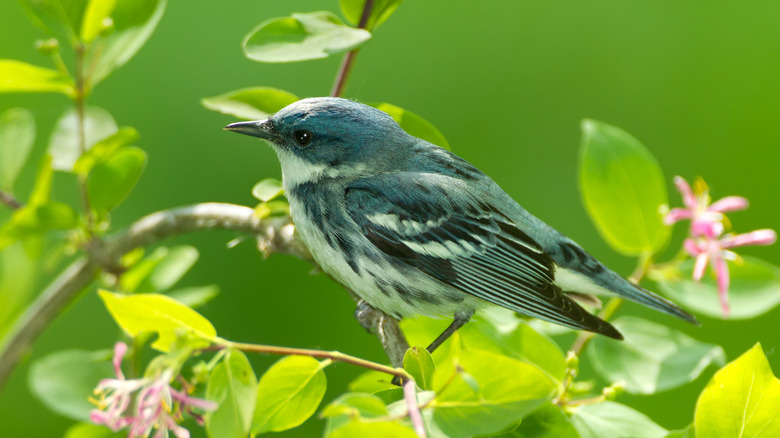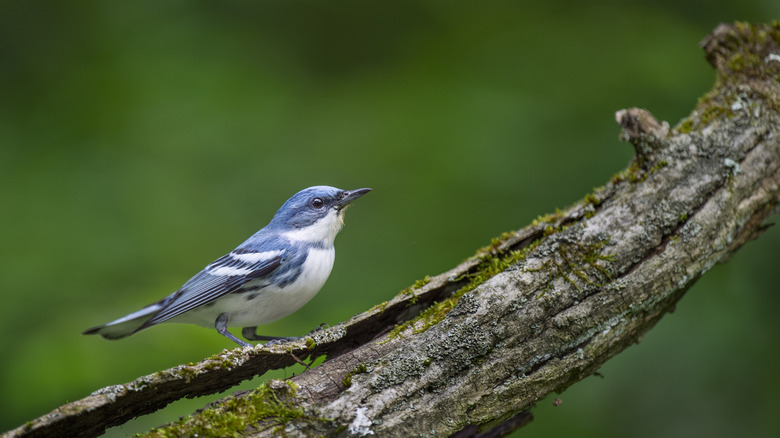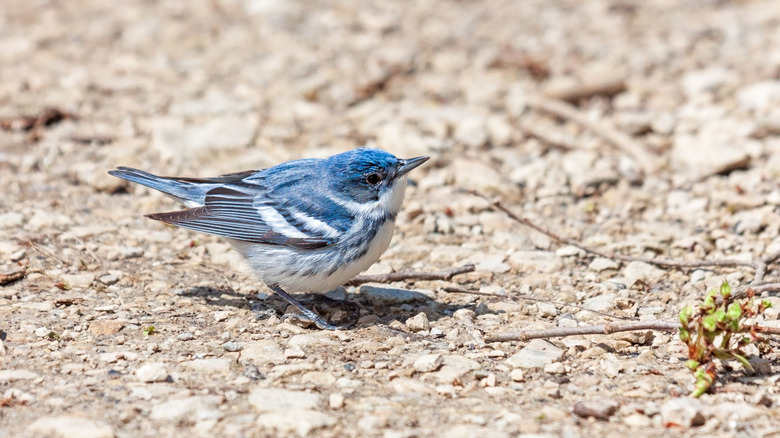The Rare Blue Bird You Can Find In Indiana's Forests Through Spring, Summer, And Fall
Birds are some of the most fascinating animals on the face of the planet. Modern birds actually descend from theropods, or two-legged dinosaurs, developing new features over millions of years. From walking upright on two legs to evolving feathers and wishbones and eventually developing wings (one of the most impressive bird adaptations), birds have undergone a remarkable evolutionary journey to become the creatures we know today. That in and of itself makes the animals incredibly interesting, but there are thought to be at least 11,000 species (some estimates put the number closer to 18,000) each with their own equally fascinating and unique characteristics.
From the small number of birds that are actually poisonous to the only birds in the world that can fly backwards, there are so many amazing species of bird. The United States is home to many of them, with more than 800 species existing within the country, and one particularly intriguing example is the cerulean warbler. Once widespread in the eastern United States, this rare songbird is now found in smaller pockets of the country. But during the summer, Indiana hosts cerulean warblers that have made an incredible journey to nest in the state's forests.
The cerulean warbler is a vulnerable visitor to Indiana
Indiana is home to a diverse array of wildlife. While much of the land in the Hoosier State is used for farming, its forests, rivers, and proximity to the Great Lakes mean it plays host to a range of wild animals, many of which are vulnerable or endangered. Invasive species are wreaking havoc in Indiana, leading several native species to become imperiled. Still, scientists are fighting back against invasive species and have seen success in Indiana's Dunes National Park, where wetlands have been restored after having been taken over by invasive plant species.
But the wetlands of the Dunes National Park are far from the only threatened elements in Indiana. The cerulean warbler, for instance, was widespread throughout the Ohio and Mississippi River valleys in the 19th century. The Ohio river forms the southern border of Indiana, and the state is also home to some of the headwaters of the Mississippi River watershed. Sadly, habitat loss has meant the cerulean warbler no longer breeds throughout much of that area. According to the North American Breeding Bird Survey, between 1966 and 2019 the cerulean warbler population declined by 63%. Thankfully, however, these remarkable birds haven't been completely wiped out and can in fact be seen in Indiana during the summer months.
The cerulean warbler is a temporary Indiana resident
Even though Indiana hosts more than 300 bird species annually, the cerulean warbler is one of the rarer birds in the state. If you do manage to see one, however, it's an impressive sight. The songbird might be small (less than 4.5 inches in length) but it has a striking appearance. Males boast a blue plumage that features streaks of white and black, while females feature a blue-green plumage with a hint of yellow that's equally alluring.
The birds once resided throughout the eastern United States, but their dramatic population decline means they can now only be found in a few locations, including the Appalachian region and the Andes Mountains of South America. The latter provides a refuge during the winter months, but in summertime, the cerulean warbler makes the 3,000 mile journey to nest in southern Indiana.
The warbler can typically be found in Indiana from mid to late April, making use of the state's deciduous forests that provide ideal grounds for nesting. The large trees alongside younger trees allow for openings in the upper canopy, around which cerulean warblers forage. They are also thought to use these gaps in the canopy for projecting their songs into the air and attracting female mates. By mid-July, however, the cerulean warblers fly back to the Andes , making them a temporary summer resident in Indiana.


